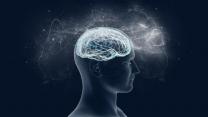
A web-based platform for the identification of fronto-subcortical connectivity disruptions of brain disorders
Problema a solucionar
Brain disorders, including psychiatric and neurological conditions, have been traditionally diagnosed by their behavioral and cognitive manifestations rather than by objective biomarkers of alteration in brain structure and function. This has led to considerable delays in establishing a first diagnose and a poor capacity for effective treatment selection and monitoring across treatment, ultimately conducting to a suboptimal clinical management of patients.
Aplicacions
This technology will be a valuable tool for the diagnosis and treatment monitoring of neuropsychiatric disorders, such as major depressive disorder, obsessive-compulsive disorder, substance and behavioral addictions, Parkinson’s or Huntington’s disease. It will also allow the classification of individuals according to brain malfunction.
This tool could be exploited by clinicians, radiologists and researchers, and it could be extrapolated to other brain areas and disorders
Estat de la tecnologia
A specific set of neuroimaging indices have been defined and validated for a particular group of symptoms, related to neuropsychiatric disorders. An identification-classification algorithm by making use of these indices is being developed. Once this is done, the whole product will be implemented at the cloud as a web-based platform. This technology has already been developed and commercialized for other specific disorders (such as Parkinson’s disease).
Context
Structural and functional neuroimaging techniques allow for a non-invasive assessment of brain state, and the different indices that may be derived from the analysis of these data at the individual level can be used as objective biomarkers of brain alteration. In particular, alterations in the structural and functional connectivity between the frontal cortex and subcortical structures have been shown to underpin different cognitive and behavioral symptoms that appear transdiagnostically across several disorders, such as compulsivity, impulsivity and emotional dysregulation, which may be observed in a number of psychiatric and neurological disorders. Some studies have demonstrated the feasibility of using neuroimaging indices for patient classification. Nevertheless, they have just been focused on the analysis of whole brain data for a particular disorder. This has limited the impact to a specific group of subjects and results have not been easily linked to the functions of a specific brain circuit.
Tecnologia
The research group, in collaboration with Qmenta (an advanced neuroimaging company) has developed an easy-to-use web-based platform to identify biomarkers of altered fronto-subcortical connectivity in neuropsychiatric disorders and classify subjects according to these measurements. Clinicians and researchers will just have to upload their structural and functional images to the platform in order to obtain a classification and a diagnostic of their groups of subjects/patients.
Autors
Soriano, C (IDIBELL)
Technology Readiness Level
TRL 5
Què busquem?
Codesenvolupament
Inversió
